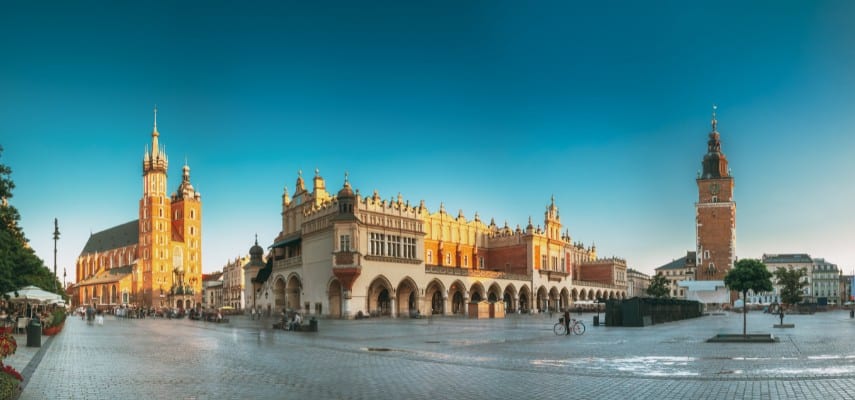
Yogyakarta, often affectionately called "Jogja," is more than just a city; it’s the beating heart of Javanese culture, a living museum steeped in history, art, and spirituality. From the majestic silhouettes of ancient temples at dawn to the vibrant buzz of traditional markets, Jogja offers a profound and authentic Indonesian experience. For the budget-conscious traveller, the good news is that this cultural gem is increasingly accessible, with a plethora of options for finding cheap flights. This comprehensive guide will navigate you through securing affordable airfare and making the most of your journey to this enchanting destination, covering its top attractions, rich history, essential travel tips, accommodation, transportation, and the best time to visit.
Why Yogyakarta? The Allure of Java’s Cultural Capital
Yogyakarta captivates visitors with its unique blend of ancient wonders and contemporary artistic flair. It’s a city where the past seamlessly intertwines with the present, offering an experience unlike any other in Indonesia.

Related Articles about Unlocking Yogyakarta: Your Guide to Cheap Flights and an Unforgettable Cultural Adventure:
- Switzerland: A Symphony of Scenery, Culture, and Precision
- The Enchanting Tapestry of the Golden City: Your Ultimate Guide to San Francisco
- Kia Ora! Your Ultimate Guide to Journeying to the Land of the Long White Cloud: New Zealand
- Marrakech: A Sensory Symphony in the Ochre City
- Lebanon: A Journey Through Ancient Wonders, Vibrant Culture, and Unyielding Spirit
1. Architectural Marvels and Spiritual Sanctuaries:
No visit to Yogyakarta is complete without witnessing its two UNESCO World Heritage Sites. Borobudur Temple, a magnificent 9th-century Buddhist monument, is the largest of its kind in the world. Its intricate carvings depict the path to enlightenment, culminating in a breathtaking panoramic view of the surrounding volcanic landscape, especially magical at sunrise. Equally impressive is Prambanan Temple, a stunning Hindu complex dedicated to the Trimurti (Brahma, Vishnu, and Shiva). Its towering spires and detailed reliefs tell tales from the Ramayana epic, offering a stark yet harmonious contrast to Borobudur’s Buddhist serenity.
2. The Sultanate’s Legacy:
At the very core of Yogyakarta’s identity lies the Keraton Ngayogyakarta Hadiningrat, the Sultan’s Palace. This sprawling complex is not merely a historical landmark but the active residence of the reigning Sultan, who holds significant cultural and political influence. Exploring its pavilions, courtyards, and museums offers a fascinating glimpse into Javanese royalty, customs, and performing arts. Nearby, the whimsical Taman Sari (Water Castle), a former royal garden and bathing complex, provides another layer of historical intrigue with its secret passages and elegant architecture.
3. The Pulse of Malioboro Street:
For a taste of local life and bustling commerce, Malioboro Street is an essential stop. This vibrant thoroughfare is a sensory overload in the best possible way, lined with street vendors selling everything from batik clothes and traditional crafts to delicious street food. It’s the perfect place to hone your bargaining skills, soak in the atmosphere, and perhaps enjoy a ride on a traditional becak (pedicab).
4. Nature’s Majesty:
Beyond the urban sprawl, Yogyakarta is framed by dramatic natural landscapes. Mount Merapi, one of Indonesia’s most active volcanoes, offers thrilling jeep tours that take you across its lunar-like landscapes, revealing the resilience of local communities living in its shadow. For those seeking cooler climes and lush greenery, the surrounding hills are dotted with tea plantations and waterfalls, providing a refreshing escape.
5. Artistic Expression and Culinary Delights:

Yogyakarta is a hub for traditional Javanese arts, particularly batik (the intricate wax-resist dyeing technique) and silverware. Visitors can observe artisans at work, try their hand at crafting, and purchase exquisite souvenirs. The city’s culinary scene is equally captivating, with Gudeg (jackfruit stew cooked in coconut milk) being its most iconic dish – a must-try for any food adventurer.
A Glimpse into History: The Soul of Java
Yogyakarta’s history is a rich tapestry woven from ancient kingdoms, spiritual traditions, and the fight for independence. Its roots trace back to the mighty Mataram Kingdom (8th-10th centuries), which was responsible for the construction of Borobudur and Prambanan, testaments to its advanced civilization and religious tolerance.
The modern Sultanate of Yogyakarta was established in the mid-18th century, stemming from the division of the Mataram Kingdom. It quickly became a center for Javanese high culture, preserving ancient customs, arts, and philosophies that had been lost or diluted elsewhere. The Keraton became the focal point for this cultural preservation.
Perhaps its most pivotal role came during the struggle for Indonesian independence. When the Dutch attempted to re-establish colonial rule after World War II, Yogyakarta served as the capital of the fledgling Republic of Indonesia from 1946 to 1949. Sultan Hamengkubuwono IX’s unwavering support for the nationalist movement cemented Yogyakarta’s status as a special autonomous region and a symbol of national resilience. This deep historical and cultural legacy continues to shape the city’s identity, making it a truly unique destination.
Finding Cheap Flights to Yogyakarta: Your Budget Travel Blueprint
The key to an affordable trip often begins with the flight. While Yogyakarta might not always be the cheapest international entry point into Indonesia, smart planning can significantly cut down costs.
1. Know Your Airports:
Yogyakarta is served by two main airports:
- Adisutjipto International Airport (JOG): This older, smaller airport is closer to the city center but primarily handles domestic flights and limited international routes (e.g., to Singapore, Kuala Lumpur). Its capacity is limited.
- Yogyakarta International Airport (YIA): Located further afield in Kulon Progo (about 45 km from the city), YIA is a newer, larger international airport designed to handle more traffic. It offers better facilities and is increasingly becoming the primary gateway for international and major domestic routes. Factor in the longer transfer time and cost when flying into YIA.
2. Domestic Hubs and International Connections:
For most international travellers, direct flights to Yogyakarta are rare outside of Southeast Asian hubs. Your best bet for cheap flights is often to fly into a major regional hub first and then catch a domestic connection:
- Kuala Lumpur (KUL) or Singapore (SIN): These are excellent regional hubs with frequent, often cheap, flights to YIA/JOG via airlines like AirAsia, Scoot, and Batik Air.
- Jakarta (CGK): Indonesia’s capital is another prime entry point. Many international airlines fly to Jakarta, from where you can find abundant and affordable domestic flights to Yogyakarta with airlines like Lion Air, Batik Air, Citilink, and Garuda Indonesia. Look for "promo fares" on these local carriers.
3. Master the Art of Flight Search:
- Flexibility is King: If your travel dates are flexible, you’ll have a significant advantage. Mid-week flights (Tuesday-Thursday) and off-season travel generally yield lower prices. Use flight comparison websites’ "flexible dates" or "month view" features.
- Comparison Websites: Utilise aggregators like Skyscanner, Google Flights, Kayak, and Momondo. These platforms scour hundreds of airlines and online travel agencies to find the best deals. Always cross-reference prices on the airline’s official website, as sometimes they offer exclusive deals.
- Set Price Alerts: Most flight search engines allow you to set up alerts for specific routes. You’ll receive email notifications when prices drop, ensuring you don’t miss a bargain.
- Book in Advance (But Not Too Far): For international flights, booking 2-4 months in advance is often ideal. For domestic flights within Indonesia, 1-2 months is usually sufficient. Booking too early or too late can sometimes result in higher fares.
- Consider Budget Airlines: AirAsia, Scoot, Lion Air, and Citilink are your best friends for cheap flights in Southeast Asia. Be mindful of their baggage policies and add-on costs, as these can sometimes negate the initial savings if you’re not careful. Pack light!
- Clear Your Cache & Use Incognito Mode: Some theories suggest that airlines and booking sites track your searches and may increase prices for routes you’ve repeatedly viewed. Clearing your browser’s cache/cookies or using incognito/private browsing mode might help circumvent this, though its effectiveness is debated.
- Mix and Match: Don’t be afraid to book separate one-way tickets on different airlines if it’s cheaper than a round-trip on a single carrier. This is especially useful when combining international and domestic legs of your journey.
4. The Layovers Strategy:
While direct flights are convenient, multi-stop itineraries, particularly those with longer layovers, can be significantly cheaper. For instance, flying from Europe to Jakarta with a budget airline, then catching a separate flight to Yogyakarta, might save you hundreds compared to a single ticket to YIA. Use the layover to explore another city if time permits!
Essential Travel Tips for Yogyakarta
Once your flights are booked, here are some practical tips to ensure a smooth and enjoyable trip:
- Visa: Check Indonesia’s visa requirements for your nationality. Many countries qualify for visa-free entry for tourism for up to 30 days, while others can obtain a Visa on Arrival (VoA).
- Currency: The local currency is the Indonesian Rupiah (IDR). ATMs are widely available, especially in urban areas. It’s wise to carry some smaller denominations for street vendors and small purchases.
- Language: Bahasa Indonesia is the official language. Learning a few basic phrases (e.g., terima kasih – thank you, apa kabar – how are you, permisi – excuse me) will go a long way in connecting with locals. Many people in tourist areas speak some English.
- Safety: Yogyakarta is generally safe, but like any tourist destination, be aware of petty theft. Be cautious of overly friendly strangers offering unsolicited help or directions, especially around Malioboro, as some might be touts trying to lead you to commission-based shops.
- Health: Drink bottled water only. Be mindful of street food hygiene; choose popular stalls with high turnover. Pack mosquito repellent, sun protection, and basic medications.
- Dress Code: While generally relaxed, dress modestly when visiting temples and religious sites (shoulders and knees covered). Lightweight, breathable fabrics are best for the tropical climate.
- Connectivity: Local SIM cards (Telkomsel, Indosat Ooredoo) are affordable and widely available at the airport or convenience stores. Wi-Fi is common in hotels and cafes.
- Bargaining: Haggling is expected in markets like Malioboro. Start at about 50-70% of the asking price and negotiate politely.
Accommodation Options: A Bed for Every Budget
Yogyakarta offers a diverse range of accommodation, ensuring there’s something for every budget and travel style.
- Budget (Under $20/night): Hostels and guesthouses are abundant, particularly in the Prawirotaman and Sosrowijayan areas (near Malioboro). These often offer dormitory beds or simple private rooms, communal spaces, and a chance to meet fellow travellers.
- Mid-Range ($20-$70/night): Boutique hotels, 3-star hotels, and charming guesthouses provide more comfort and amenities without breaking the bank. Look for options with swimming pools, air conditioning, and breakfast included.
- Luxury ($70+ /night): High-end hotels and resorts offer upscale services, often with traditional Javanese aesthetics, fine dining, and extensive facilities. You’ll find these near the Keraton or in more exclusive districts.
- Unique Stays: Consider a homestay for an authentic cultural immersion or rent a traditional Javanese house (limasan or joglo) via Airbnb for a memorable experience.
Booking platforms like Booking.com, Agoda, and Airbnb are excellent resources for finding and comparing options.
Getting Around Yogyakarta: Navigating the City
Navigating Yogyakarta is relatively straightforward, with a mix of modern and traditional transport options.
- From YIA (Yogyakarta International Airport):
- Airport Train: The fastest and most convenient option to reach Tugu Station (central Yogyakarta).
- DAMRI Bus: A more economical choice, connecting the airport to various points in the city.
- Taxi/Ride-hailing: Available, but more expensive.
- Within the City:
- TransJogja: Yogyakarta’s Bus Rapid Transit (BRT) system is efficient, affordable, and covers major routes. It’s a great way to travel between key attractions.
- Becak (Pedicab): Iconic to Yogyakarta, becaks are ideal for short distances and experiencing the city’s charm. Always agree on the price before starting your journey.
- Andong (Horse Cart): Primarily found around Malioboro, andongs offer a traditional and leisurely ride, more for novelty than practicality.
- Ride-hailing Apps (Gojek & Grab): These super apps are indispensable. They offer motorbike taxis (ojek) for quick, cheap rides through traffic, as well as car services, food delivery, and more. Highly recommended for convenience and transparent pricing.
- Taxis: Metered taxis are available, but ensure the meter is used or negotiate a fare beforehand.
- Motorbike Rental: For experienced riders, renting a scooter offers maximum flexibility, but be aware of traffic and local driving habits.
Best Time to Visit: Chasing the Perfect Weather
Yogyakarta, like much of Indonesia, experiences a tropical climate with two main seasons:
- Dry Season (May to September): This is generally considered the best time to visit. Expect sunny skies, lower humidity, and comfortable temperatures. It’s ideal for exploring outdoor attractions like Borobudur, Prambanan, and Mount Merapi. This is also peak tourist season, so expect more crowds and potentially higher prices for flights and accommodation.
- Wet Season (October to April): Characterised by higher humidity and regular rainfall, often in the form of short, intense downpours. While it might seem less appealing, the wet season brings lush green landscapes, fewer tourists, and potentially lower prices. Many activities can still be enjoyed, and the rain often provides a refreshing break from the heat.
Shoulder Seasons (April and October): These months can offer a sweet spot, balancing good weather with fewer crowds than the peak dry season.
Avoid Major Public Holidays: If possible, try to avoid visiting during major Indonesian holidays like Eid al-Fitr (Lebaran) and the Christmas/New Year period. Domestic travel surges, leading to higher prices and crowded attractions.
Your Journey Awaits
Yogyakarta is a destination that promises to enrich the soul, awaken the senses, and offer a deep dive into the captivating tapestry of Javanese culture. With its awe-inspiring temples, regal traditions, vibrant markets, and artistic flair, it’s a place that lingers long in the memory. By applying smart strategies for finding cheap flights and embracing the practical tips outlined in this guide, you can unlock the magic of Jogja without breaking the bank. So, start planning, set those price alerts, and prepare for an unforgettable adventure to the heart of Java. Your cultural odyssey begins now.





